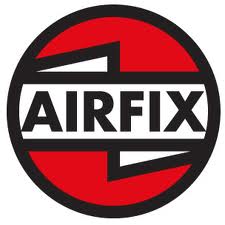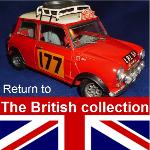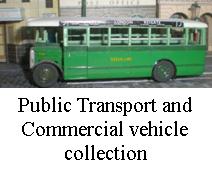
1940 Fordson WOT 1A/1
Fordson was the name the Ford family gave to a separate company wholly owned by the family and focused on the production of tractors, agricultural vehicles, and later, commercial vehicles. The name is a simple contraction of Ford & Son. With WWII looming Ford were approached to manufacture vehicles for the British Army, the lorry chassis being known as the WOT series; or War Office Truck series. Ford chose to produce the vehicles from the Ford Motor Company plant in Dagenham where in 1940 they were still manufacturing the Ford Anglia but it wasn't long before the production of civilian vehicles ceased and all resources were focused on the production of military vehicles.
The plant turned out tractors to aid the drive for food, universal (Bren) carriers, trucks and light vans and by June 1940 was turning out 130 military vehicles a day. In total Ford produced 355,000 vehicles between 1939 and 1945. The WOT1 was introduced in 1940 as a general purpose chassis upon which many different body styles were mounted. The most common was the standard lorry but the chassis' also carried bus bodies for transport purposes, mobile dentistries, searchlights, barrage balloons and even specialist units for drying out parachutes.
Although the WOT1 had six wheels drive only went to four of them,so it was a classic 6X4. Weighing in at 3.5 tons empty the truck could carry a payload of 3 tons and, thanks to the 30hp Ford engine, reach a top speed of 72kph on proper roads. It was available in two lengths, the shorter 4.2m version being known as the WOT1A and the 4.5m as the WOT1A/1. This was the version the fire trucks were put on with the largest numbers being delivered to the RAF for use as aircraft crash tenders.
The RAF and RN used these vehicles along side the older Crossley 6x4 Teardrop (of 1936/7) and the Crossley 6x4 (from 1939) which carried the same configuration as the later Crossley 4x4. During the Battle of Britain the Fordson Sussex 6x4 equipped with 3 x 30 gallon froth extinguishers, and the Fordson WOT1 were the most common fire tenders. The WOT1A/1 carried 400gallons of water and 65gallons of foam concentrate. The pump was powered via a PTO, “Power Take Off”, drive engaged by a lever in the cab when the road gearbox was in neutral. The vehicle was driven not by a fireman but by an MT, “Motor Transport”, driver. The driver also operated the pump during firefighting operations. The pump air foam induction system sent aerated foam through four 2½ inch side lines. The activating valves are not the ball type vale we know but a sluice type wound up by a screw thread operated by a rotating handle.
The crash crew consisted of four firefighters, one of which wore a bulky asbestos suit which would allow him to work directly in flames for up to four minutes in order to carry out a life saving rescue. Standard attire for the remaining three firefighters was overalls, leather jerkin, rubber boots and the standard steel helmet with a canvas cover to give some added protection to the head and neck. This could be in the form of a simple back/neck skirt of a full head/face skirt with a tempered glass letterbox opening to allow for vision; US crews used only the former neck protection. Each of these three men also carried a belt with a hand axe and a quick release knife so as to effect entry to an aircraft and cut away the aircrew harnesses.
When the US Army Air Force came into Britain, sometimes completely taking over RAF bases, they took over the Firefighting equipment too. It was common to find USAAF personnel operating repainted RAF crash tenders throughout the war even alongside their own Dodge GMC based trucks. As for camouflage the RAF quickly moved to adopt the Army colours once the phoney war ended. Fordson crash tenders were painted green G3, then SCC2 brown and later SCC15 Olive Drab – a somewhat greener colour than the US Olive drab. The first formally promulgated RAF vehicle base colour was Khaki Green #3 with disruptive pattern in Nobels dark tarmac green #4 or light Green G5. It is doubtful that any WOT1A crash tenders were ever painted in RAF blue-grey until after hostilities ended.













This model is a conversion of the 1945 style Austin K6 crash tender from the Airfix Emergency set, kit #A204V. Airfix originally released this 1:76th “OO” scale set in 1969 it has been re-released numerous times, most recently as kit #A03304 in 2009. Consisting of the Austin K2/YF Ambulance and 1945 Austin K6 Fire Crash Tender it is a very nice set for adding some action to an airfield scene. However the set has been criticized for both vehicles in that the Austin K2 was not a general service RAF vehicle and the crash tender never saw service with the R.A.F. The RAF and RN did change the configuration to that depicted but not until after the war and then only on the Fordson chassis not the Austin K6 chassis. The RAF did later use the K6 chassis as a CO2 crash tender, with a very different body.
So, while our conversion is by no means 100% accurate it is actually closer to a WWII/Battle of Britain era crash rescue tender than the Airfix kit. Much of the bodywork and detailing is scratch built, augmented with some 'kit bashing' for other parts. Grey plastic is from an Airfix kit the white is plasticard and Evergreen strip/rod. Squadron green putty was used for any filling of joints.
The model is all brush painted with Humbrol enamels, the main colour being Humbrol #155 US olive drab, and Deco-Art and Citadel acrylics.

